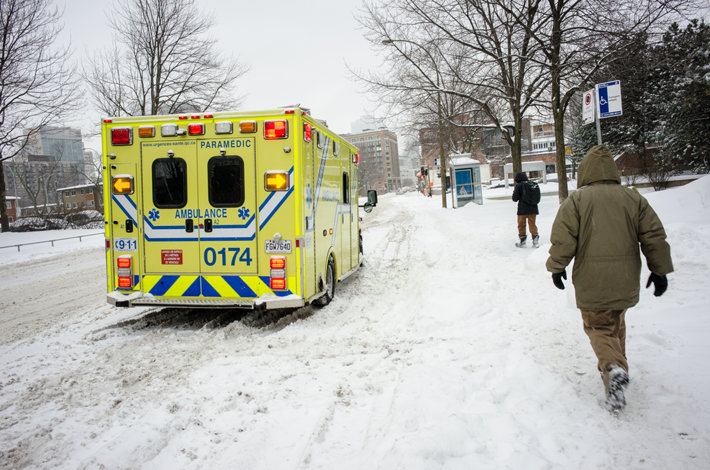Canada’s Addiction Crisis Mirrors Closest Neighbor

The magnitude of Canada’s opioid epidemic is comparable to that of the United States’, though it is not mentioned much on U.S. media channels. But it is a newsworthy story since there is an opioid crisis right across our border. The true nature and statistics of the opioid epidemic in Canada merit investigation, with an eye on solutions, solutions that must include addiction treatment.
Opioid Abuse in Canada—Facts and Statistics
Canada’s opioid crisis shares many of the same traits and patterns of the opioid situation which has wreaked havoc in the United States. For example, Canada experienced a surge in opioid prescribing, with circumstances like those of the U.S. This surge came about through promptings by pharmaceutical manufacturers seeking to increase sales of their addictive products through advertising. Much like in the US, the problem quietly but rapidly crept towards epidemic proportions. When the dangers of the surge in opioid drug use were in full view, Canadian physicians began curbing their prescribing numbers. This led to a massive conflict within Canada, as reduced prescriptions meant fewer opioids for addicts, but also fewer prescriptions for legitimate pain patients.
“Opioid overprescribing, a plausible result of disingenuous marketing practices, has played a role in our current opioid crisis...”

Quoting researchers from the Canadian Family Physician Journal, “Opioid overprescribing, a plausible result of disingenuous marketing practices, has played a role in our current opioid crisis. The release and implementation of the 2017 ‘Guideline for opioid therapy and chronic non-cancer pain’ has created a shift in opioid prescribing for chronic non-cancer pain, and patients in the years ahead will be protected by the lower-dose recommendations. However well-meaning they are, the 2017 Canadian opioid prescribing guidelines were introduced to a health care system ill equipped to care for patients with chronic pain.”
The opioid addiction crisis has affected every region of every territory in Canada. The western provinces of British Columbia, Alberta, the Northwest Territories and the Yukon have been more affected than others, but all have been affected somehow. In fact, the 21st -century opioid crisis in Canada may be the worst addiction crisis in the country’s history. (Past addiction epidemics in Canada were not as well-examined as today’s opioid crisis due to lack of computer-based analysis, so it is difficult to precisely determine past statistics.)
The death toll from opioid overdoses in Canada is perhaps the most revealing metric of this issue’s degree of seriousness. The Government of Canada Health Department has recorded over 9,000 fatal opioid deaths since 2016.

According to another study, about 2,458 Canadians died from opioid-related overdoses in 2016. 2017 was even worse, with more than 1,000 fatal overdoses just in the province of British Columbia, and all within the first eight months of 2017.
In 2017, about 11 Canadians died every day from opioid overdoses. That death rate is comparable to the opioid overdose death rate in the U.S. that is thought to be one of the worst overdose rates in the world.
Regrettably, the opioid crisis continues to expand in Canada, with the vast majority of the deaths occurring by accident and young Canadians between the ages of 15 and 24 being the fastest-growing population for overdoses.
In some Canadian regions, opioid deaths have receded slightly, but not in British Columbia, the ground zero for the opioid crisis. There has been no change in opioid deaths in this region, despite attempts such as harm reduction technique.
Addressing the Opioid Crisis in Canada
Canada has attempted to address the opioid crisis through many avenues, without success.
One effort to reduce the spread of the opioid crisis was through the policy measure of curbing opioid prescribing—yet the crisis persisted.
Canada has also implemented several harm-reduction programs to try to tackle the addiction problem. Harm reduction efforts in Canada may have helped curb overdose deaths in some instances. Still, the practice hasn’t produced a reduction in the total number of people who are actively addicted to drugs. Harm reduction has, in many ways, allowed Canadians to remain addicted to opioids.
Quoting researcher Dr. Mark Tyndall, “The overdose crisis has exposed the large gaps in our drug treatment systems and the uneven access to harm reduction services. Even in BC, the monthly death toll has remained stubbornly unchanged, despite the declaration of a public health emergency in April 2016, a rapid scale-up of community-based naloxone distribution, intensified public education campaigns, expansion of opioid agonist therapy and the establishment of overdose prevention units.”
Canada’s opioid crisis has not abated, despite public health efforts and harm reduction strategies taken to address it. Clearly, the public health approach to this nation’s addiction epidemic is missing a key element.
Addiction Treatment—The Correct Approach to Helping Canadian Opioid Addicts
How can Canada effectively tackle its addiction epidemic? The goal of real treatment goes far beyond trying to mitigate damage. The goal of real treatment is to help the person cease using drugs completely.
Canada could make real strides in overcoming its addiction crisis if treatment were the focus for resolution. The critical solution going forward is that Canadian health officials, policymakers, and individual families must invest in making drug and alcohol addiction treatment available to those addicted to opiates. Only with the help of residential addiction treatment centers can Canadian opiate addicts hope to overcome addiction and experience a sober, drug-free life.
Sources:
- https://www.ncbi.nlm.nih.gov/pmc/articles/PMC6741787/
- https://pubmed.ncbi.nlm.nih.gov/29911818/
- https://www.ncbi.nlm.nih.gov/pmc/articles/PMC5770249/
- https://www.canada.ca/en/health-canada/services/publications/healthy-living/canada-opioid-crisis-fact-sheet.html


 ®
®